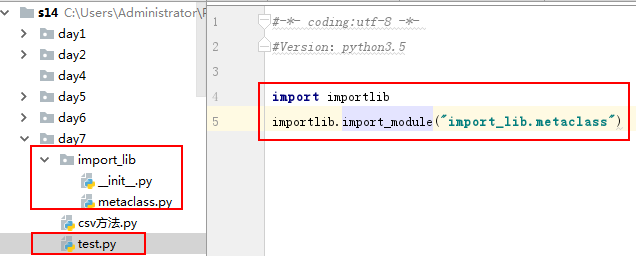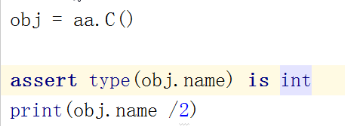Python之路,Day7 - 面向对象编程进阶
Python之路,Day7 - 面向对象编程进阶
一、isinstanse(obj,cls)和issubclass(sub,class)
判断obj是否是类cls的对象
判断sub是否是类class的子类
二、反射
1.定义:程序可以访问、检查、修改它本身状态和行为的一种能力
2.python中一切皆是对象, 以下方法适用类和对象

1 class Person(): 2 def __init__(self,name,age): 3 self.name = name 4 self.age = age 5 6 class Student(Person): 7 def __init__(self,name,age): 8 super(Student,self).__init__(name,age) 9 10 def study(): 11 return 'studying' 12 13 @staticmethod 14 def exam(): 15 return 'examing' 16 17 s =Student('sam',12) 18 19 #查询类中是否有此属性 20 print(hasattr(s,'age')) 21 22 #获取属性对应的参数 23 print(getattr(s,'age')) 24 25 #新增属性 26 setattr(s,'sex','male') 27 print(s.__dict__) 28 #结果{'name': 'sam', 'age': 12, 'sex': 'male'} 29 print(hasattr(s,'sex')) #True 30 print(getattr(s,'sex')) #'male' 31 32 #删除属性 33 delattr(s,'age') 34 print(s.__dict__) 35 #结果{'name': 'sam', 'sex': 'male'} 36 37 #一切皆对象,类可以同样的操作 38 print(hasattr(s,'age')) #True 39 print(Student,'staticmethod') #True 40 print(getattr(Student,'exam')()) #examing 41 42 setattr(Student,'sex','male') 43 print(Student.__dict__) 44 #结果{.....'sex': 'male'} 45 46 print(delattr(Student,'study'))
3.反射的好处:实现即插即用,事先把主要逻辑写好,只定义接口,后期再完善接口的功能

1 class part(): 2 def start(self): 3 print('代码已写完....') 4 5 class all(): 6 def keepgo(self): 7 if hasattr(part,'start'): 8 print('keepgo') 9 else: 10 exit('功能未实现')
4.动态导入模块

三、自定義屬性方法
__setattr__,__delattr__,__getattr__
四、__getattribute__
#当__getattribute__与__getattr__同时存在,只会执行__getattrbute__,除非__getattribute__在执行过程中抛出异常AttributeError

1 class Foo: 2 def __init__(self,x): 3 self.x=x 4 5 def __getattribute__(self, item): 6 print('不管是否存在,我都会执行') 7 8 f1=Foo(10) 9 f1.x 10 f1.xxxxxx
五、__setitem__,__getitem,__delitem__

1 class Foo(object): 2 def __getitem__(self, item): 3 print('__getitem__',item) 4 5 def __setitem__(self, key, value): 6 print('__setitem__',key,value) 7 8 def __delitem__(self, key): 9 print('__delitem__',key) 10 11 obj = Foo() 12 result =obj['k1'] 13 obj['k2']='sam' 14 del obj['k1'] 15 print(obj.__dict__) 16 17 #执行结果 18 __getitem__ k1 19 __setitem__ k2 sam 20 __delitem__ k1 21 {}
六、__module__和__class__
分别表示:当前操作在哪个模块、哪个类
七、__call__
方法的执行是对象后面加(),或类后面加()()
断言:检查前面是否正确






